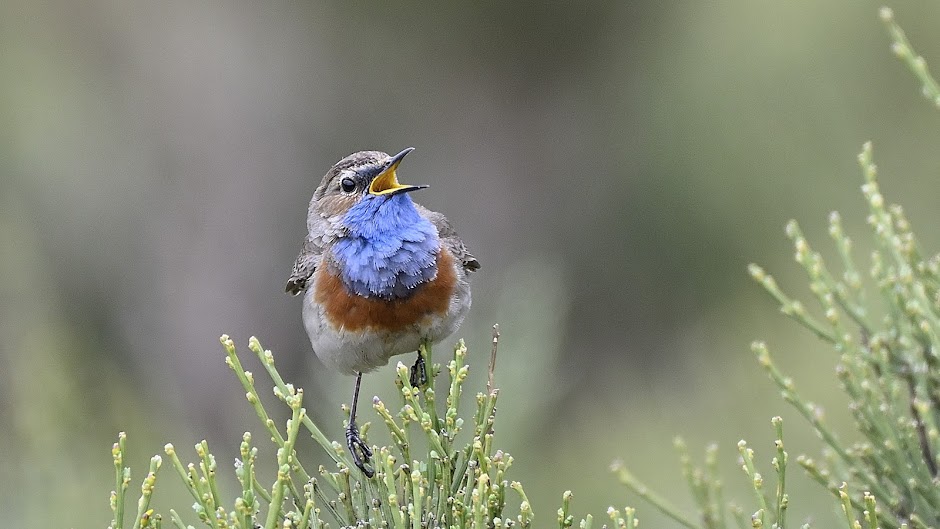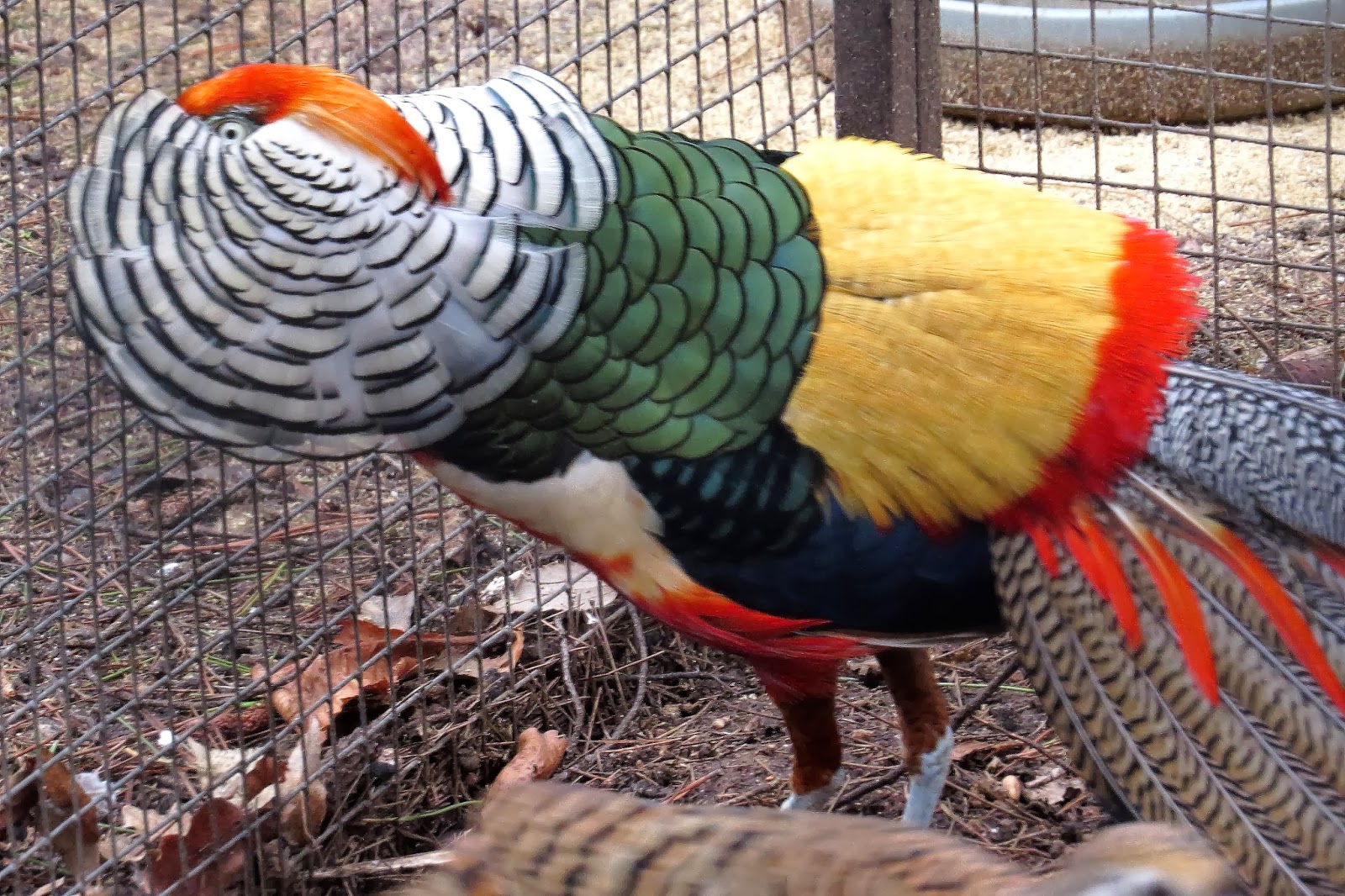Hola otra vez.
Hello again.
Esta vez os muestro algunas de las aves urbanas de las que he podido disfrutar en los jardines del Parque del Moro en el entorno del Palacio Real de Madrid. Los jardines son impresionantes así como las vistas del Palacio Real. Un amigo pajarero me había comentado que en una visita realizada a éste lugar había visto bastantes picogordos (Coccothraustes
coccothraustes) y reyezuelos listados (Regulus
ignicapilla). Me faltó tiempo para decidir visitar el lugar.
This time I show you some of the urban birds of which I have enjoyed in the Jardines del Parque del Moro in the surroundings of the Royal Palace of Madrid. The Garden is stunning such is the view of the Royal Palace. A birder friend had told me that on a visit to this place had seen some Hawfinch as well as Firecrests. I ran out of time to decide to visit this place.
Aunque las previsiones del tiempo no eran buenas decidí ir de todos modos y se cumplieron. Lo más abundante fueron las nubes, un poco de lluvia y solo un 10% de sol. Entre la poca luz existente y lo inquietas que son el tipo de aves que en él habitan el resultado son estas fotos pero no siempre tienen que ser buenas. Solo pretendo dar a conocer, para quien no lo sepa ya, las aves que se pueden ver en este Parque de fácil acceso para todo el mundo.
Although the weather forecast was not good, I decided to go anyway and forecast won. The most abundant were clouds, a little rain and only 10% of sun. Between the low existing light and the restless that are these kind of birds that livel therein the result are these photos but not always have to be good. I just pretend to give you an idea of wath you can find in this Park of easy access for everyone.
El mejor sitio para dejar la furgoneta es debajo del Lago del La Casa De Campo y en un breve paseo, adornado con muchas cotorras argentinas (Myiopsitta
monachus), se llega a los Jardines.
The best place to leave the van is under the Lago de La Casa De Campo and within a short walk, adorned with thousands of Monk Parakeets, one arrives at these Gardens.
Nada más comenzar el paseo hacía mi destino vi a esta cigüeña blanca (Ciconia
ciconia) posada en lo alto de un cedro.
Just starting of my walk to my destiny I saw this White Stork perched on top of a Cedar.
Había algunas palomas zuritas (Columba
oenas) en los árboles de la casa de los guardas de la Casa de Campo.
There were severale Stock Poves in the trees of the House of the Guards of La Casa de Campo.
La vista de la entrada a los Jardines del Parque del Moro con el Palacio Real de fondo. Una maravilla.
The view at the entrance of the Gardens of El Parque del Moro with the Royal Palace in the background. A marvel.
Entrando a la derecha hay un estanque que está lleno de ánades reales (Anas
platyrhynchos) salvajes que se sienten protegidos en este reducido espacio.
Going into the right there is a pond that is full of wild Mallards that feel protected in this small place.
Y también estaba este macho de tarro canelo (Tadorna
ferruginea) que está convenientemente anillado y amputado.
And there was this male Ruddy Shelduck conveniently ringed and amputated.
Al igual que esta pareja de cisnes negros (Cygnus atratus).
Like this pair of Black Swans.
Siempre me ha llamado la atención el rizado de sus plumas coberteras.
I have always been inpressed by the curly of their coverts feathers.
Y también había algunos pavos reales (Pavo cristatus).
And there also were some Peacocks.
Las hembras son menos llamativas para poder camuflarse durante la incubación.
Females are less showy to camouflage during incubation.
Su parte posterior no es tan clamorosa.
Their rear is not so clamorous.
No muy lejos del estanque hay una pajarera que alberga unos faisanes. En la imagen un macho de faisán vulgar (Phasianus
colchicus).
Not far from the pond there is an aviary that houses a few pheasants. In the picture a Common
Pheasant male.
Y a este ardoroso macho de hibrido de faisán dorado con faisán lady Amherst.
And this ardent hybrid male Golden Pheasant with Lady Amherst Pheasant.
Los gorriones molineros (Passer
montanus) eran abundantes y estaban por todo el parque.
Tree sparrows were abundant and were all over the Park.
También había muchos carboneros garrapinos (Periparus
ater). Fijaos como este ejemplar saca cuidadosamente las semillas de las piñas del abeto.
There were also many Coal Tit . Look carefully as this specimen takes out the seeds of this cone Pine Fir.
Con tanto arbusto es difícil hacer fotos a los pájaros.
With so much shrubs is difficult to take pictures of birds.
En esta foto se puede apreciar la diferencia de tamaño entre la paloma zurita (Columba oenas) en la izquierda y la bastante mayor paloma torcaz (Columba
palumbus).
In this photo you can see the difference in size between the Stock Dove in the left side and the far greater Wood Pigeon.
En estos jardines se ha formado un buen dormidero de palomas torcaces (Columba palumbus) como se puede apreciar cuando paseas por sus caminos.
In these Gardens has formed a good roosting place for Wood Pigeons as it can be seen when you walk trough its paths.
A estos nerviosos enanos no hay quien les saque una buena foto pues no suelen salir de la vegetación muy densa y de hoja perenne a no ser que se les coloque un comedero. Se trata de un reyezuelo listado (Regulus
ignicapilla).
To these dwarves nervous there is none that takes a good photo of them because rarely leave the evergreen dense vegetationa unless you place a seed feeder. This is a Firecrest.
Había muchos mirlos comunes (Turdus
merula) en todo el Parque.
There were many Blackbirds within the Park.
La hembra que es menos llamativa.
The female is less showy.
El mejor sitio para ver y fotografiar a los inquietos mosquiteros comunes (Phylloscopus
collybita) era el césped de la entrada aunque sin acercarte demasiado.
The best place to see and photograph the restless Chiffchaffs was the front lawn but don´t get too close.
Como era de esperar había urracas (Pica pica).
As expected there were Magpies.
Y alguna que otra lavandera cascadeña (Motacilla
cinerea).
And some Grey Wagtail.
Los Petirrojos (Erithacus rubecula), que no se callan ni debajo del agua, entretiene con sus maravillosos cantos este bonito paseo.
Robins, that do not shut even underwater, entertain with their beautiful songs this pleasant walk.
Las abundantes y mal afamadas cotorras argentinas (Myiopsitta
monachus).
The abundant and badly famous Monk Parakeets.
Algunas estaban pensando en traer más ejemplares al mundo.
Some were thinking of bringing some more to the World.
También los verdecillos (Serinus
serinus) estaban anunciando la llegada de la primavera.
Also European
Serin were announcing the arrival of Spring.
Sin embargo los pinzones vulgares (Fringilla
coelebs) estaban más tranquilos.
However Chaffinches were more relaxed.
Un carbonero común (Parus
major) de los muchos que vi.
A Great Tit of the many seen.
Y también abundaban sus primos los herrerillos comunes (Cyanistes
caeruleus).
And also were abounded their cousins the Blue Tits.
Se oían muchos agateadores comunes (Certhia
brachydactyla) aunque se veían menos.
Many Short-toed Treecreeper were heard although less were visible.
Y estos fueron los que me trajeron hasta este lugar los picogordos (Coccothraustes
coccothraustes) aunque debido a la cantidad de árboles existentes en el parque y a su desconfianza me resultaba muy difícil sacarles fotos. No había quien se acercase a ellos.
And these were the ones who brought me to this place the Hawfinches but due to the amount of trees and their distrust it was very difficult to make them pictures. There was no one that can get close to them.
Cuando me iba decidí darme un paseo por los jardines que bordean el Río Manzanares para ver otro tipo de aves. En la imagen un cormorán grande (Phalacrocorax carbo) adulto con plumaje nupcial de.
When I was leaving I decided to make a walk through the gardens bordering the River Manzanares to see some other tipe of Birds. In the photo an adult Great Cormorant in breeding plumage.
Gaviota reidora (Chroicocephalus
ridibundus) que ya tenía el plumaje de cría.
Black-headed Gull already with its breeding plumage.
La misma especie con el plumaje de invierno.
Same specie with winter plumage.
También había gaviotas sombrías (Larus
fuscus).
There were also Lesser Black-backed Gulls.
Y esta gallineta común (Gallinula
chloropus).
And this Moorhen.
Otra toma del Palacio Real y los Jardines del Campo del Moro.
Another shot of the Royal Palace and the Gardens of del Campo del Moro.
Y cuando regresaba a la furgoneta vi a esta pareja de palomas zuritas (Columba
oenas) adormiladas a la entrada de su futuro nido.
And while I was returning to the van I saw this pair of Stock Doves sleeping at the entrance of their future nest.
Alguno de los nidos de las gregarias cotorras argentina (Myiopsitta monachus) pueden ser ser inmensos y albergar a varias parejas.
Some of the nests of the gregarious Monk Parakkets may be huge and can house several pairs.
En resumen un bonito parque para visitar aunque no te gusten las aves.
In summary a nice Park to visit although you don´t like birds.
Hasta la próxima entrada.
Til next post.




































































No hay comentarios:
Publicar un comentario